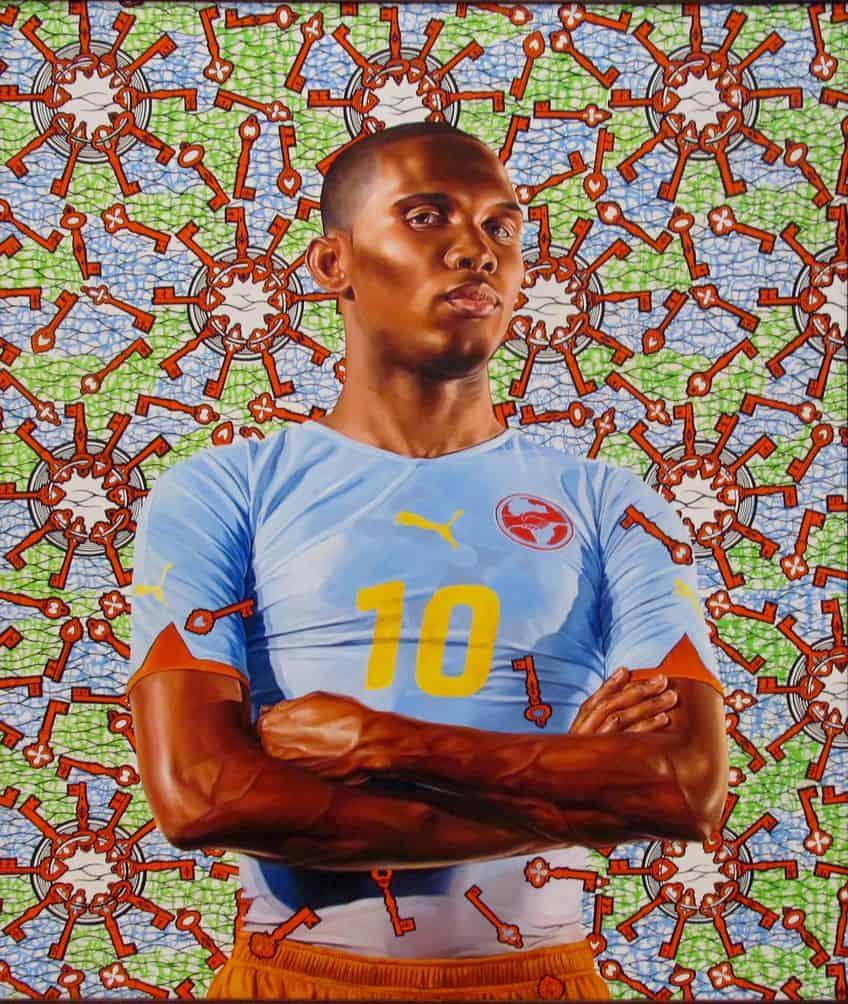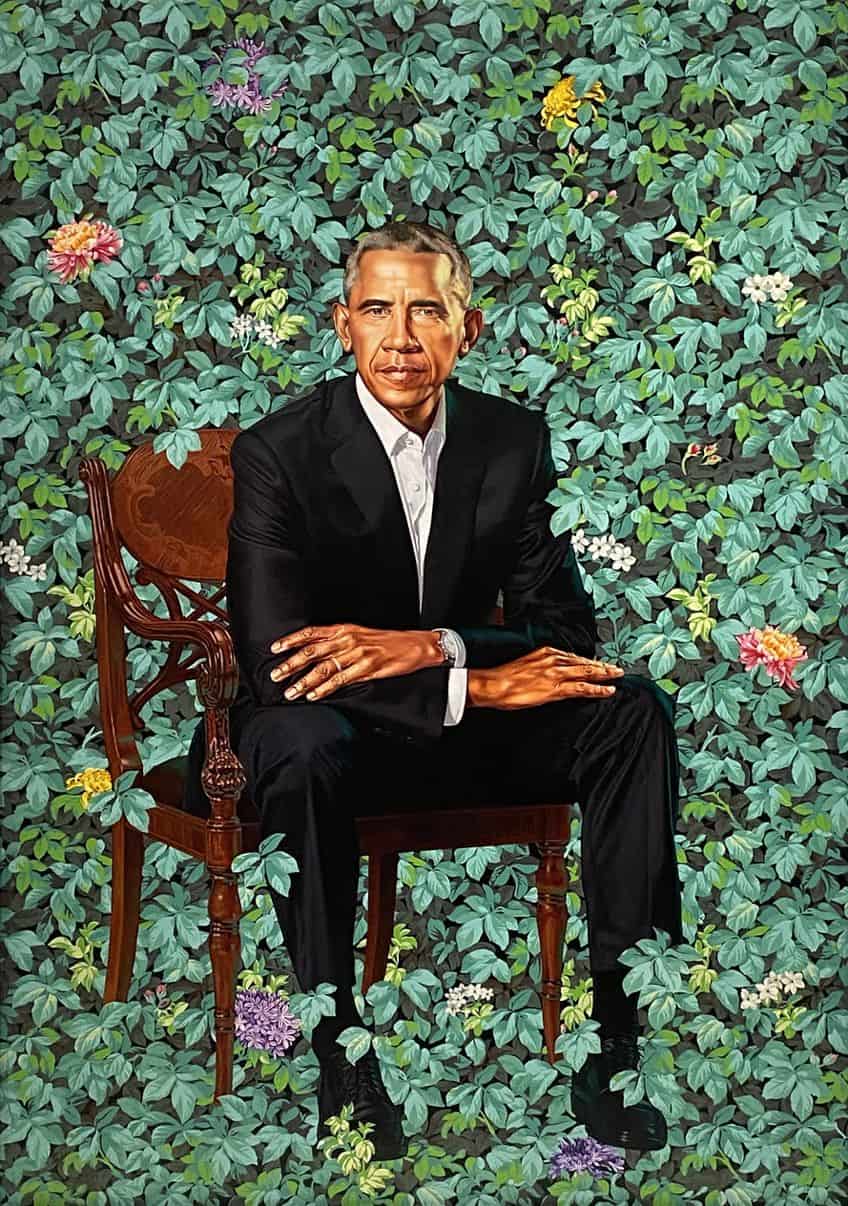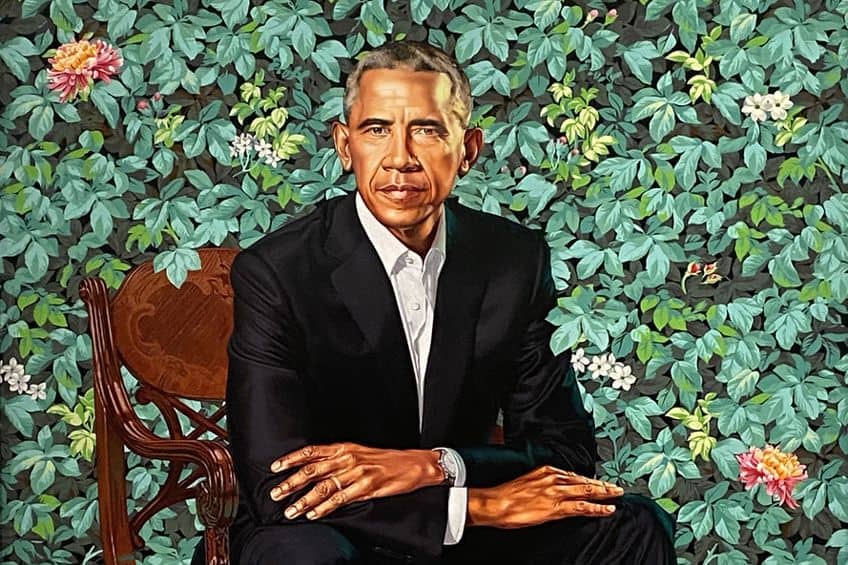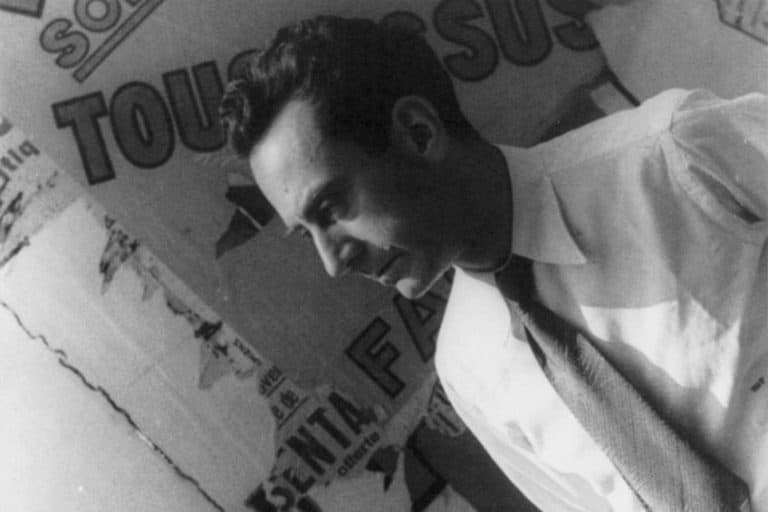Kehinde Wiley Paintings – The African American Portrait Artist
Kehinde Wiley, a contemporary artist renowned for his vibrant and provocative paintings, has captivated audiences worldwide with his unique approach to portraiture. His works often feature young African American men and women in classical poses, juxtaposing traditional art historical references with modern-day cultural elements. Wiley’s intricate attention to detail, vivid use of color, and exploration of identity and representation have solidified his place as a leading figure in contemporary art. In this article, we delve into the top Kehinde Wiley paintings that showcase his artistic mastery and thematic richness.
Table of Contents
- 1 The Portraiture of Kehinde Wiley
- 2 Top 10 Kehinde Wiley Paintings to Know
- 2.1 Napoleon Leading the Army Over the Alps (2005)
- 2.2 Equestrian Portrait of Philip IV (2005)
- 2.3 Portrait of a Venetian Ambassador (2006)
- 2.4 Equestrian Portrait of Charles I (2007)
- 2.5 The Two Sisters (2012)
- 2.6 Judith and Holofernes (2012)
- 2.7 Shantavia Beale II (2012)
- 2.8 Saint Adelaide (2014)
- 2.9 Kehinde’s Obama (2018)
- 2.10 Femme Piquée par un Serpent (Mamadou Gueye) (2022)
- 3 Frequently Asked Questions
The Portraiture of Kehinde Wiley
Kehinde Wiley’s portraiture stands out for its bold reinterpretation of traditional conventions. He often selects ordinary people from the streets and places them in classical poses reminiscent of historical portraits, creating a juxtaposition that challenges viewers’ expectations. Wiley’s subjects, predominantly African American men and women, are portrayed with dignity and grandeur, subverting stereotypes and reclaiming narratives of power and representation. His use of vibrant colors, intricate patterns, and decorative elements further enhances the richness of his portraits, inviting viewers to explore complex themes of identity, race, and cultural heritage.

Moreover, Wiley’s portraits not only capture the physical likeness of his subjects but also convey their individual stories and experiences. Through careful attention to details such as clothing, accessories, and background settings, he embeds layers of meaning and personal narratives within each portrait. This approach not only humanizes his subjects but also encourages viewers to consider the complexities of identity and the diverse narratives that shape our understanding of self and society.
Overall, Kehinde Wiley’s portraiture is a powerful testament to the transformative potential of art in challenging norms, celebrating diversity, and redefining notions of beauty and representation.
Top 10 Kehinde Wiley Paintings to Know
In this section, we delve into the top 10 artworks by Kehinde Wiley, a renowned contemporary artist known for his bold reinterpretations of classical themes and powerful portrayals of marginalized communities. Each artwork in this list represents not only Wiley’s technical mastery and artistic innovation but also his commitment to challenging conventions, celebrating diversity, and sparking meaningful dialogues about identity, representation, and cultural heritage. From reimagined historical figures to empowering portraits of everyday individuals, these artworks showcase Wiley’s unique vision and profound impact on the art world.

Napoleon Leading the Army Over the Alps (2005)
| Date | 2005 |
| Medium | Oil on canvas |
| Dimensions (cm) | 274.3 x 274.3 |
| Where Is It Housed? | Brooklyn Museum, New York City, United States |
This painting depicts a contemporary African American man in the pose of Napoleon Bonaparte in Jacques-Louis David’s famous portrait. By placing a black man in the role of a historical European figure, Wiley challenges traditional notions of power and representation in art.
The painting’s significance lies in its subversion of historical narratives, highlighting issues of race, identity, and the complexities of cultural appropriation.

Equestrian Portrait of Philip IV (2005)
| Date | 2005 |
| Medium | Oil on canvas |
| Dimensions (cm) | 274.3 x 274.3 |
| Where Is It Housed? | Museum of Fine Arts, Boston, Massachusetts, United States |
In this work, Kehinde Wiley reimagines Diego Velázquez’s iconic portrait of King Philip IV of Spain. The painting features a young African American man in place of the king, adorned in modern streetwear and surrounded by a lush, ornate background.
Through this reinterpretation, Wiley addresses themes of masculinity, heritage, and the intersection of classical and contemporary aesthetics, inviting viewers to question traditional notions of power and authority.

Portrait of a Venetian Ambassador (2006)
| Date | 2006 |
| Medium | Oil on canvas |
| Dimensions (cm) | 182.8 x 152.4 |
| Where Is It Housed? | Norton Simon Museum, Pasadena, California, United States |
This painting portrays a young black man dressed in elegant Renaissance-style attire, reminiscent of historical Venetian ambassadors. The juxtaposition of the subject’s modern appearance with the formal, aristocratic setting challenges viewers to reconsider stereotypes and preconceptions about race and social status.
By merging past and present, Kehinde Wiley’s work prompts discussions about cultural identity, representation, and the enduring relevance of historical art forms.
Equestrian Portrait of Charles I (2007)
| Date | 2007 |
| Medium | Oil on canvas |
| Dimensions (cm) | 274.3 x 274.3 |
| Where Is It Housed? | The Huntington, San Marino, California, United States |
Inspired by Anthony van Dyck’s portrait of King Charles I on horseback, this painting features a contemporary black man in a similar pose, wearing contemporary clothing. The juxtaposition of the classical equestrian portrait with modern urban fashion creates a dialogue about history, power, and the portrayal of black masculinity in art.
Through this reinterpretation, Wiley addresses themes of identity, agency, and the complexities of historical representation.

The Two Sisters (2012)
| Date | 2012 |
| Medium | Oil on canvas |
| Dimensions (cm) | 274.3 x 274.3 |
| Where Is It Housed? | Smithsonian National Portrait Gallery, Washington D.C., United States |
In this painting, Kehinde Wiley depicts two young African American women in a classical portrait style, evoking traditional depictions of siblings in art history. The subjects are adorned with vibrant patterns and modern clothing, blending elements of contemporary culture with timeless artistic motifs. Through this work, Wiley explores themes of sisterhood, identity, and the intersection of personal and cultural narratives.
He invites viewers to contemplate the diversity and richness of human experience.

Judith and Holofernes (2012)
| Date | 2012 |
| Medium | Oil on canvas |
| Dimensions (cm) | 274.3 x 274.3 |
| Where Is It Housed? | National Gallery, London, United Kingdom |
This painting reinterprets the biblical story of Judith beheading the Assyrian general Holofernes. Kehinde Wiley replaces the historical figures with contemporary African American women, challenging traditional gender roles and narratives of power. The work’s importance lies in its subversion of religious and historical themes.
This highlights issues of agency, strength, and empowerment within marginalized communities.

Shantavia Beale II (2012)
| Date | 2012 |
| Medium | Oil on canvas |
| Dimensions (cm) | 274.3 x 274.3 |
| Where Is It Housed? | Saint Louis Art Museum, Missouri, United States |
This portrait features a young African American woman in a regal pose against a richly patterned background. The subject’s confident gaze and dignified posture challenge stereotypes and celebrate black beauty and resilience.
Through this painting, Kehinde Wiley emphasizes the importance of representation, self-expression, and the empowerment of individuals often marginalized in traditional art narratives.

Saint Adelaide (2014)
| Date | 2014 |
| Medium | Stained Glass |
| Dimensions (cm) | 274.3 x 274.3 |
| Where Is It Housed? | Toledo Museum of Art, Ohio, United States |
In this work, Kehinde Wiley portrays a contemporary African American man as a saint, blending religious iconography with modern symbolism. The painting’s significance lies in its exploration of spirituality, identity, and the intersection of faith and culture.
By reimagining traditional saints with diverse ethnicities and backgrounds, Wiley invites viewers to reconsider notions of sanctity, diversity, and inclusivity in religious imagery.

Kehinde’s Obama (2018)
| Date | 2018 |
| Medium | Oil on canvas |
| Dimensions (cm) | 274.3 x 228.6 |
| Where Is It Housed? | Brooklyn Museum, New York City, United States |
This portrait depicts former President Barack Obama seated in a chair, surrounded by lush foliage and symbolic elements. Kehinde Wiley’s portrayal of Obama as a thoughtful and powerful figure reflects his admiration for the former president’s leadership and legacy.
The painting’s importance extends beyond its subject matter, as it symbolizes progress, diversity, and representation at the highest levels of political power.

Femme Piquée par un Serpent (Mamadou Gueye) (2022)
| Date | 2022 |
| Medium | Oil on canvas |
| Dimensions (cm) | 335 x 762 |
| Where Is It Housed? | Foundation of Louis Vuitton, Paris, France |
This painting reinterprets the classical theme of “Femme Piquée par un Serpent” (Woman Bitten by a Snake) with Mamadou Gueye, a Senegalese immigrant, as the subject. Kehinde Wiley’s choice of Gueye challenges traditional narratives of beauty and vulnerability, celebrating the strength and resilience of black individuals. The work’s meaning extends to discussions about migration, identity, and the complexities of cultural assimilation in contemporary society.

Kehinde Wiley’s top paintings not only exhibit his technical prowess and artistic innovation but also offer profound insights into themes of identity, race, and representation in contemporary society. Through his bold reinterpretation of classical portraiture, Wiley challenges conventional norms and invites viewers to engage in critical dialogues about cultural heritage and individuality. His enduring influence on the art world underscores the power of art to provoke thought, inspire change, and celebrate the diversity of human experience.
Frequently Asked Questions
What Is the Significance of Kehinde Wiley’s Portraits?
Kehinde Wiley’s portraits are significant for their depiction of marginalized communities with dignity and grandeur, subverting stereotypes and reclaiming narratives of power. His use of vibrant colors, intricate patterns, and historical references adds layers of meaning to his work, sparking discussions about diversity, agency, and the intersection of past and present.
How Does Kehinde Wiley Blend Classical and Contemporary Elements in His Artwork?
Kehinde Wiley blends classical and contemporary elements in his artwork by placing modern-day individuals in classical poses and settings, often referencing iconic historical paintings. This juxtaposition creates a dynamic tension between tradition and modernity, inviting viewers to reevaluate established norms and perceptions.
What Impact Has Kehinde Wiley Had on the Art World?
Kehinde Wiley has had a significant impact on the art world by challenging traditional notions of beauty, power, and representation. His work has sparked conversations about diversity, inclusion, and the role of art in addressing social and cultural issues. He has also inspired a new generation of artists to explore themes of identity and agency in their own work.
Isabella studied at the University of Cape Town in South Africa and graduated with a Bachelor of Arts majoring in English Literature & Language and Psychology. Throughout her undergraduate years, she took Art History as an additional subject and absolutely loved it. Building on from her art history knowledge that began in high school, art has always been a particular area of fascination for her. From learning about artworks previously unknown to her, or sharpening her existing understanding of specific works, the ability to continue learning within this interesting sphere excites her greatly.
Her focal points of interest in art history encompass profiling specific artists and art movements, as it is these areas where she is able to really dig deep into the rich narrative of the art world. Additionally, she particularly enjoys exploring the different artistic styles of the 20th century, as well as the important impact that female artists have had on the development of art history.
Learn more about Isabella Meyer and the Art in Context Team.
Cite this Article
Isabella, Meyer, “Kehinde Wiley Paintings – The African American Portrait Artist.” Art in Context. April 3, 2024. URL: https://artincontext.org/kehinde-wiley-paintings/
Meyer, I. (2024, 3 April). Kehinde Wiley Paintings – The African American Portrait Artist. Art in Context. https://artincontext.org/kehinde-wiley-paintings/
Meyer, Isabella. “Kehinde Wiley Paintings – The African American Portrait Artist.” Art in Context, April 3, 2024. https://artincontext.org/kehinde-wiley-paintings/.











